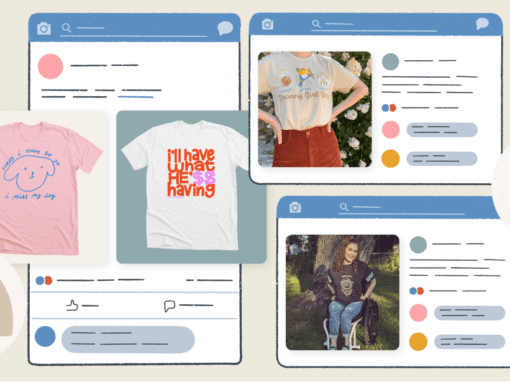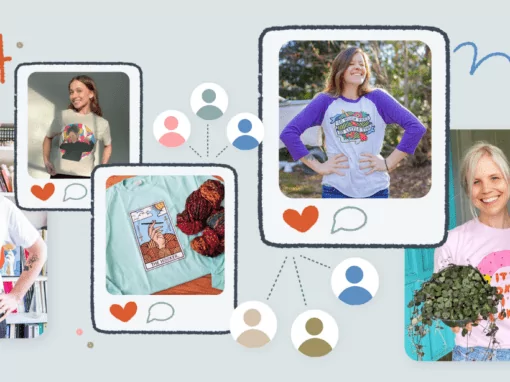Getting your campaign featured in the news exposes it to thousands of people outside of your social circle and provides credibility to your campaign. It’s an essential way to promote your campaign and increase the funds you raise.
Before beginning, it’s important to decide if this promotion technique is right for you and your Bonfire campaign. Make sure you and anyone else involved in your campaign are comfortable with being in the spotlight and speaking on behalf of your cause. By the nature of news, you have to put yourself and your campaign out there. And don’t worry, if you realize this type of publicity isn’t the right step for your campaign, you can check out our list of other effective promotion techniques to use for your campaign.
Craft your story
The first step to getting your campaign picked up by a news outlet is crafting your story. At Bonfire, we love shirts as much as anybody else. But launching your t-shirt isn’t a story in itself. What’s most interesting is the story behind your shirt.
Ask yourself:
- What is my campaign about? Is there a larger issue surrounding it, such as a rare disease or animal care?
- Why should people care? Is it for a good cause? Does it affect them in some way?
- Who is involved in the campaign? Is the campaign related to someone who’s well known in your town?
- When does my campaign take place? Is there an event connected with the shirt?
- What am I trying to accomplish?
Using the responses to these questions, write a paragraph or two that captures what your campaign is truly about. This is your story. If your campaign is already live, you likely have already included this story on your campaign page. If it’s not, use our campaign page editor to add it along with some pictures that help visually tell the story behind your t-shirt.
Find your target audience
Now that you know the details of your story, you need to figure out who would be interested in sharing it with the world. In Chapter One of our Seller Guide, you learned how to identify your target audience. Using this knowledge, think about what news outlets your target buyers would be looking at. Is it their local newspaper or TV station? Is it a lifestyle news outlet like Town & Country or Bustle? Create a list of these magazines, news stations, and blogs.

Next, work through the list to find reporters and their contact information. The best place to start is to use the search bar on an outlet’s site to look for stories that are similar to yours. Once you find one, read through it to see if the content runs in a similar vein as your story, and if so, write down the reporter’s name and email address.
If you are having trouble finding a reporter that you think would be interested, use the general news tip emails listed on the outlet’s site. These emails are monitored by reporters and editors writing about a variety of topics. You can usually find them on the contact page.
Write your email pitch
After you know who you’d like to reach out to, it’s time to write an email pitch. This provides the basic details about your story and is what you will use to get a reporter interested. While you might be tempted to simply copy and paste the story you feature on your campaign page, the pitch is actually meant to give a teaser of your story.
How to write a good email pitch
Follow these guidelines when writing your pitch to reporters:
- Keep it short. Aim for 250 words or less.
- Have a short, descriptive, and compelling subject line. Imagine what the headline of your story would like if it were in the news and use that to write your subject line.
- Personalize the email. If you show you took the time to read a reporter’s previous work, they are more likely to read your pitch.
- Include a link to your campaign page or someplace where the reporter can find more details and pictures related to your campaign. This is also where they can read more about your story.
Email pitch examples
Here is an example email template that you can use:
Email Subject Line: [One sentence or less description of your story that serves as a headline]
Hi [Journalist’s name],
I read your story on [summary of the story]. I’d like to share my own story with you.
[2-3 sentence description about your campaign. This should include a short description of why you are doing this campaign, where the money raised goes, and why it’s important for the news outlet’s audience.]
The community has raised [amount] so far. You can read more about the story on my Bonfire campaign page: [link to campaign page]
Is this something you’d be interested in? I’d love the opportunity to share more details via email or phone at [phone number].
Thanks,
[YOUR NAME]
Send your pitch
Once you have your pitch, simply type it up into an email and send it off to each reporter on your list. Don’t be surprised if it takes some time to get a response. Reporters get hundreds to thousands of pitches every day that they have to sort through, while also meeting their writing deadlines.
If you don’t get a response after a week, it’s okay to follow up once. The best time to do so would be after your campaign raises more funds, or reaches a new threshold, so you can share it as an update on your progress.
???? Want an easy way to keep track of all the reporters you’ve reached out to?
???? Download our free media outreach template to keep track of everything.
Help the reporter
If you get a response, be ready to help the reporter with whatever they need in a timely fashion. Sometimes, you only have an hour before the window of opportunity closes.
Be prepared to do any of the following:
- Answer questions about you campaign. This could mean you answer some questions by email or you may need to get on a phone call. If you need to hop on a phone call, have times that you and anyone else involved in your campaign are available to share.
- Provide additional pictures. A reporter may have a specific picture in mind or they may want something other than what you have on your campaign page. If they need it to be high quality, you can use a service like WeTransfer to get past limits on email file sizes.
- Go on TV to talk about your campaign. If you decide to share your story with a TV station, they will likely want to film you. They may send a crew to film you or ask that you come to the studio. In either case, be ready to provide your availability and answer any logistics questions if they are coming to you to film.
Share your story
If your story is posted, make sure to share it on your social media. The news story is a great way to update and reinvigorate your supporters who have already purchased from your campaign. It’s also great to tag and thank the reporter in your post. Without them, your story wouldn’t be in the news.
In addition, you’ll likely see your campaign shared by the news outlet and getting a boost on social media with new supporters sharing your story. Consider commenting with a thank you as well as liking or sharing these posts.
If your story doesn’t get posted, don’t be discouraged. Focus on your sharing your story on social media and promoting it in other ways. You’ll still have a successful campaign, and you might find that a reporter reaches out to you in the future.





